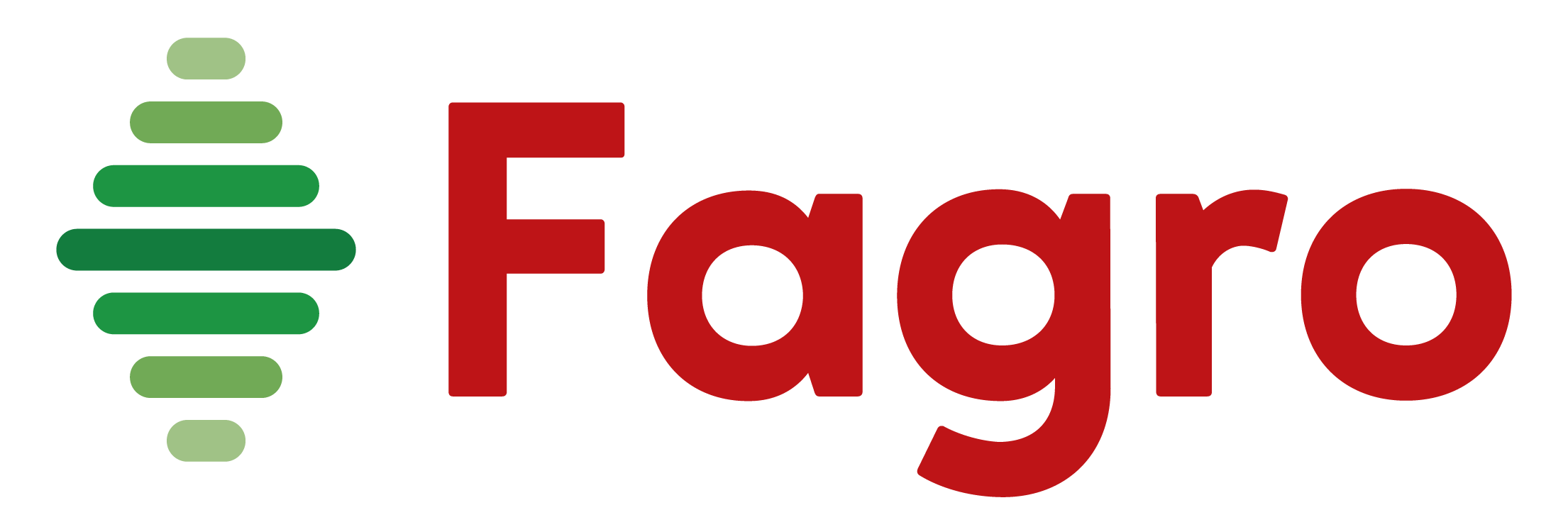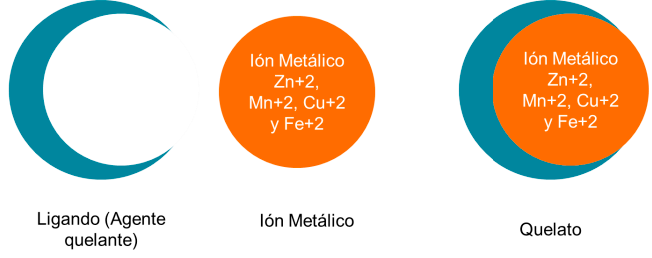1. Chelated Microelements
1.1 Definition of chelate
Chelates are highly stable products capable of keeping metal ions (Zn + 2, Mn + 2, Cu + 2 and Fe + 2) surrounded by an organic molecule (chelating agent) so that they are safeguarded from the environment that would favor their precipitation. as an insoluble hydroxide (OH-).
OH- ions are abundant in neutral or alkaline soils and medium soils. The metal ion coating protects the metal ion from surrounding OH- ions. The complex is then easily absorbed by the plant, where it is degraded and consumed as micronutrients.

A synthetic chelate is the result of combining a chelating agent with metal ions (Image 2).
Chelates release metal ions slowly and provide plants with a continuous supply of trace elements without ever reaching toxic concentrations.
The microelements that can be chelated are: Fe, Zn, Mn, Cu.
1.2 Types of chelators most used
Among the most commonly used chelators for iron are those with EDDHA. This compound can present two positional isomers, ortho-ortho (o, o-EDDHA- ethylenediamino-N, N’-di [(orthohydroxy phenyl) acetic acid], which in turn presents optical isomerism: meso isomers and dl-mixture. racemic) with high stability and long-term efficacy and ortho-para (or, pEDDHA- ethylenediamine acid -N, – [(ortho -hydroxyphenyl) acetic] -N ‘- [(parahydroxyphenyl) acetic] of less stability, but Quick response In any case, it is important to take into account the richness in the isomers and not in the soluble Fe data, since if it is not chelated it will precipitate and will not be used by plants.
EDDHMA, EDDHSA and EDDCHA also form highly stable ferric chelates.
For less sensitive crops, or not so calcareous substrates and with frequent addition of chelate, it is possible to use chelators with less stability for Fe, such as EDTA- ethlylenediamine tetraacetic acid, HEEDTA- N- (2-hydroxyethyl) ethylenediaminetriacetic acid and DTPA- acid. diethylenetriaminepentaacetic acid.
The most used chelates for the micronutrients Mn, Zn and Cu are DTPA, EDTA, HEEDTA and also IDHA. Although its effectiveness in acidic soil conditions is high, none is a completely satisfactory solution, especially for Mn, if the limestone content of the soil is very high.
There are also chelators such as citric acid, humates, gluconic acid and heptagluconic acid, also effective (heptagluconic more effective than ortho-ortho and ortho-para EDDHA in alkaline soils), although they are also classified as complexing agents, they are less stable than the aforementioned chelates and are recommended for foliar application.

